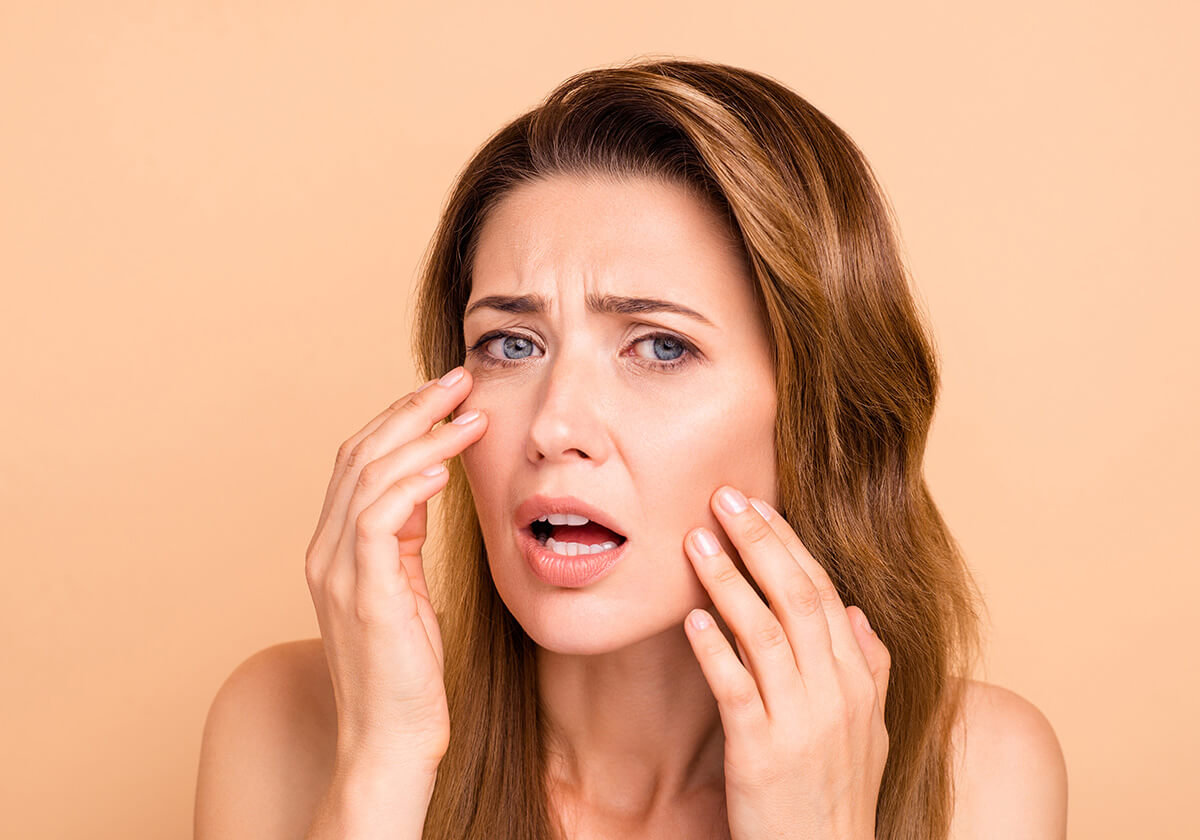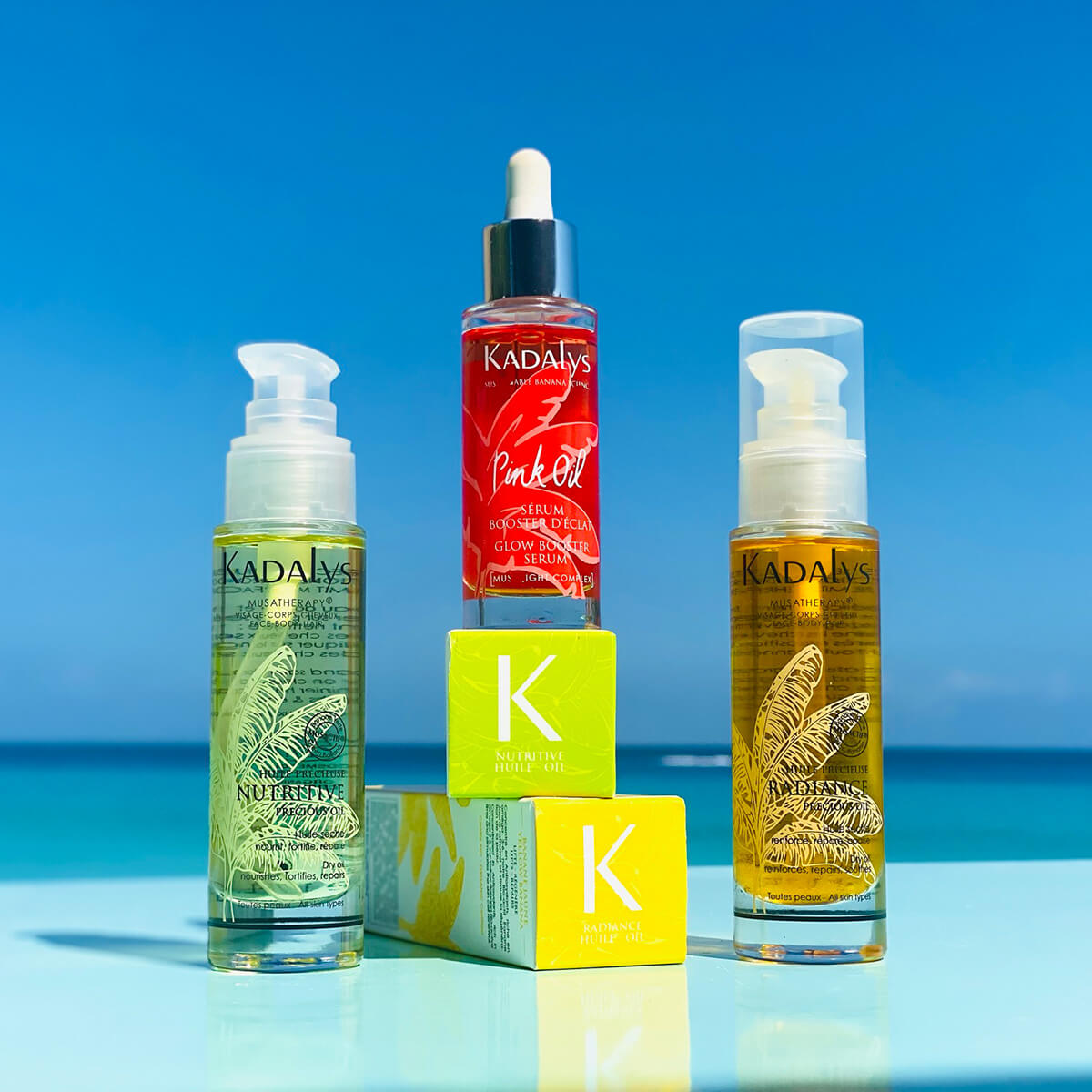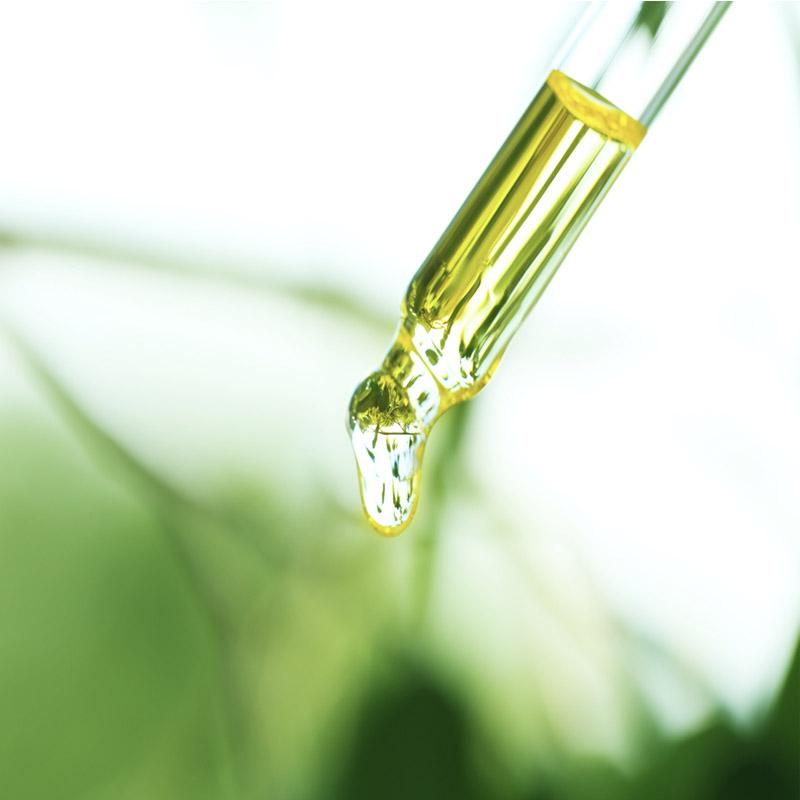
Dead Skin Build Up: Causes & Tips to Remove
Have you ever been looking in the mirror and felt like your complexion is just not looking its best? If so, you might be experiencing a buildup of dead skin on your face.
Dead skin is actually necessary for healthy skin, but too much of it can be a nuisance. The key to keeping the dead cell buildup under control is safely removing it before it builds up.
When most people think about skincare, they consider keeping their skin hydrated and free from blemishes. However, another essential part of skincare is exfoliating old cells so new skin cells can emerge.
Too many dead skin cells can cause several problems, including acne, dryness, and a dull complexion.
This blog post will discuss the causes and effects of dead skin cells and some solutions you can use to address them!
What is dead skin cell buildup?
Dead skin describes dead skin cells we shed and replace with new cells.
According to ScienceDaily, "Humans lose 200,000,000 skin cells every hour. During a 24-hour period, a person loses almost five thousand million skin cells."
Normal cell turnover occurs roughly every three to six months. These processes include the production of new skin cells and removing dead skin cells. However, dead tissue does not disappear normally. Understanding why is so crucial can help with solving the problem.

How do skin cells typically work?
The epidermis is the outermost layer of your skin. The stratum corneum is the outermost layer of the epidermis and is composed primarily of keratinocytes.
Keratinocytes produce keratin, a protein that helps give skin its elasticity and strength.
There are also three other types of cells that make up the epidermis. The melanocytes are responsible for producing melanin, the pigment that gives your skin its color.
The Langerhans cells help protect your skin from infection, and the Merkel cells help detect touch.
How do dead skin cells build up?
The epidermis is constantly renewing itself through a cellular turnover process. New keratinocytes are generated at the bottom of the epidermis, and they slowly move up towards the top, where they eventually die and fall off.
This process is called keratinization, and it's important because it helps keep your skin healthy by getting rid of old skin cells. When you remove the old, you help new skin cells rise to the surface, allowing your complexion to look fresh and glowing.
Dead skin cells are a natural part of the skin cell renewal process and the skin's natural life cycle. However, when too many dead skin cells accumulate, it can create dry, flaky patches. Dead cell buildup can make your complexion look dull and dry and lead to other skin health problems, such as acne.
Symptoms of a buildup of dead skin on face
The main symptom of dead skin cell buildup is a dull, dry complexion. Some specific symptoms that might include you have excess skin cell buildup include:
- Dry, scaly skin
- Peeling or flaky skin
- Thick skin that feels rough to the touch
- Skin looks dull or tired
- Cracks in the skin
- Congested pores
- Premature skin aging
Common causes of dead skin cell buildup
There are several reasons why this may happen. One reason is that your epidermis may not be shedding dead cells as quickly as they are being produced. This slow down can be due to various factors, such as age, genetics, sun exposure, or certain skin conditions such as atopic dermatitis.
Here are 7 of the most common causes:
Aging
When you think of aging, wrinkles and gray hair might be the first things that come to mind. But another not-so-visible change can occur as you get older: a buildup of dead skin cells.
Dead skin cells are a regular part of your skin's life cycle, but as you age, the cell turnover rate can slow down. This slower turnover can cause a skin cell buildup, leading to dryness, flakiness, and a dull complexion.
Additionally, as your skin becomes thinner and less elastic with age, dead skin cells can accumulate in creases and lines, making them more noticeable.
Worse, this dead skin cell buildup can make it difficult for skincare products to penetrate the skin barrier and achieve their full efficacy.
All this results in dull, dry skin that is more susceptible to wrinkles and other premature signs of skin aging.
Poor skincare habits
Poor skincare habits, such as not cleansing your face properly or not using a moisturizer, can lead to an accumulation of dead cells on the surface.
When you don't cleanse and moisturize your skin properly, the sebum and sweat that accumulates on the surface will mix with makeup residue, dirt, and grime from the environment and clog your pores.
Your skin might produce more oil to compensate for the lack of hydration, further clogging your pores. Over time, this will lead to a buildup of skin cells, and this can cause your complexion to look dull and lifeless. Not to mention at a greater risk of breaking out.
To avoid this, clean your face thoroughly every night and morning, and use a moisturizer daily.
Excessive exposure to external aggressors
Overexposure to the sun can damage skin cells and cause them to die, leading to a buildup of dead cells on your skin's surface.
The sun's ultraviolet rays can damage the collagen in your skin, causing it to break down and leading to a buildup of dead skin cells.
Other aggressors that can cause skin damage and lead to a buildup of skin cells include environmental factors like pollution, smoke, and harsh winds. (Here are tips to combat skin pollution and to fight free radicals.)
Not exfoliating regularly
Exfoliation is essential to any skincare routine as it helps remove dead skin cells from the skin's surface. When dead skin is not removed, it can build up and lead to several problems, such as clogged pores, dull skin, and uneven texture.
In addition, dead skin cells can also make it difficult for skincare products to penetrate the skin and be effective. Therefore, it is essential to exfoliate regularly to get rid of dead skin and avoid these issues.
Every skin type and skin tone can benefit from exfoliation to keep skin smooth and healthy. Normal skin types should exfoliate once or twice a week, while someone with sensitive skin might need to exfoliate less frequently.
Being in a dry or arid climate
Dead skin cell buildup on the face is common in arid, dry climates and cold temperatures. When the air is dry, it can lead to a loss of moisture, which can then cause the epidermis to become flaky and rough.
Additionally, cold weather can cause the blood vessels in the skin to constrict, leading to a decrease in circulation. This decreased blood flow can also contribute to dryness and flakiness.
Dry skin
Dry skin is more likely to experience dead skin cell buildup. A lack of hydration or a rough texture can create a barrier, trapping the skin cells ready to be shed underneath.
Dehydrated skin can become dry, flaky, and more susceptible to irritation and breakouts. To prevent dead skin cell buildup, use a moisturizer tailored for your specific skin type or unique skin needs.
Moisturizers help to hydrate the skin and create a protective barrier that helps to prevent dead skin cells from accumulating. The right moisturizer for your skin can help keep your complexion healthy and free of buildup.
Excess oil production
One potential cause of an accumulation of dead skin cells is excess oil production. The sebum produced by the sebaceous glands can cause dead cells to stick together. These clumps of dead skin can lead to clogged pores and a buildup on the skin's surface. In addition, excess oil production can also prevent exfoliating acids from doing their job correctly.
How to remove dead skin cells?
You can do several things to help prevent an unwanted buildup and remove dead skin cells on your skin. Adopting these habits helps you reveal fresh cells, leading to healthier skin.
Exfoliate regularly

Exfoliating helps you get rid of dead skin and old skin cells. It's a crucial step to revealing brighter, softer skin.
You can exfoliate using mechanical exfoliation, like physical scrubs, to remove dead skin cells. Another example of a physical scrub is a dry brush, pumice stone, and body scrub.
Alternately, you can use a chemical exfoliant to dissolve dead skin cells so they can be washed away. Chemical exfoliants or chemical peels include alpha hydroxy acids, like lactic acid or fruit acids, and beta hydroxy acids. Salicylic acid is an example of a beta hydroxy acid, and it is often used to treat acne.
The Kadalys Exfoliating Peel offer mechanical and chemical exfoliation so you can decide the type of exfoliation you want.
Exfoliation helps to speed up cell turnover and removes the buildup of lifeless cells that can make your complexion look dull. It helps reveal radiant skin underneath the buildup and clears the way for serums and moisturizers to penetrate the top layer of your skin better.
It also helps stimulate collagen production, which leads to firmer, younger-looking skin. In short, regular exfoliation is a vital part of any anti-aging skincare routine. By sloughing away dead skin and encouraging cell renewal, you can keep your complexion looking its best for years to come.
Exfoliating regularly can help to remove dead skin cells and reveal brighter, smoother skin. But be gentle -- over-exfoliating can cause damage to your moisture barrier and worsen the problem.
Use a moisturizer
Moisturizing will help to keep your skin hydrated and minimize the appearance of dead skin cells. Look for a moisturizer that contains hydrating ingredients like hyaluronic acid or glycerin.
Another way to help control dead skin buildup is to use moisturizing products that contain retinol or retinol alternatives such as banana bio-actives. Retinol is derived from vitamin A and can help promote cellular turnover. Faster cell turnover can help prevent the formation of new wrinkles and fine lines and improve the appearance of existing ones.
Several over-the-counter products contain retinol, but you may also want to talk to your dermatologist about prescription options.
Adopt healthy habits
Drink plenty of water and eat a healthy diet to help keep your skin hydrated and healthy.
Skin hydration is critical for a radiant complexion, and a diet rich in antioxidants and vitamins can help your skin function well. Increasing your intake of fruits and vegetables and avoiding processed foods will help not only your skin but also your entire body.
Learn more about foods that help feed your skin so it can glow.
Use a gentle cleanser

A harsh cleanser can strip your skin of its natural oils, leading to more dead skin cells. Instead, use a gentle facial cleanser that will cleanse without irritating it. Harsh soaps can remove the natural oils from your skin and can cause it to become dry. Dry skin can lead to an increase in the number of dead skin cells on the surface of your skin.
Instead use a gentle cleanser that is safe for all skin types, such as the Kadalys Natural Cleansing Gel, safe for every skin type.
Avoid excessive sun exposure
Wearing sunscreen is the best way to avoid sun exposure and prevent your skin from becoming damaged. Sunscreen protects you from the sun's harmful UV rays, which can damage the DNA in your skin cells and cause them to die. It also helps to keep your skin hydrated, which prevents dead skin cells from sticking together and forming a thick layer on your skin.
By taking simple precautions like sunscreen and limiting sun exposure time, you can help avoid dead skin cell buildup.
The bottom line
No matter our skin type, dead skin can build up on our faces. It's part of a natural process and driven by various causes, including the fact that our skin cells turnover more slowly as we age.
This buildup can lead to a dull, lackluster appearance and can even contribute to breakouts. Fortunately, we can do a few things to get rid of dead skin and reveal a healthier glow.
A straightforward way to prevent dead skin buildup is to exfoliate regularly. Exfoliating helps slough off dead skin cells and reveals the brighter, smoother skin underneath.
It's also essential to practice good skincare habits in general. A good skincare ritual means cleansing your face twice daily, using sunscreen, and avoiding picking or squeezing pimples. These simple tips can help every skin type to look its best at any age.
Finally, if you're concerned about dead skin cell buildup, talk to a dermatologist or healthcare provider about the best exfoliation method for your skin type.





